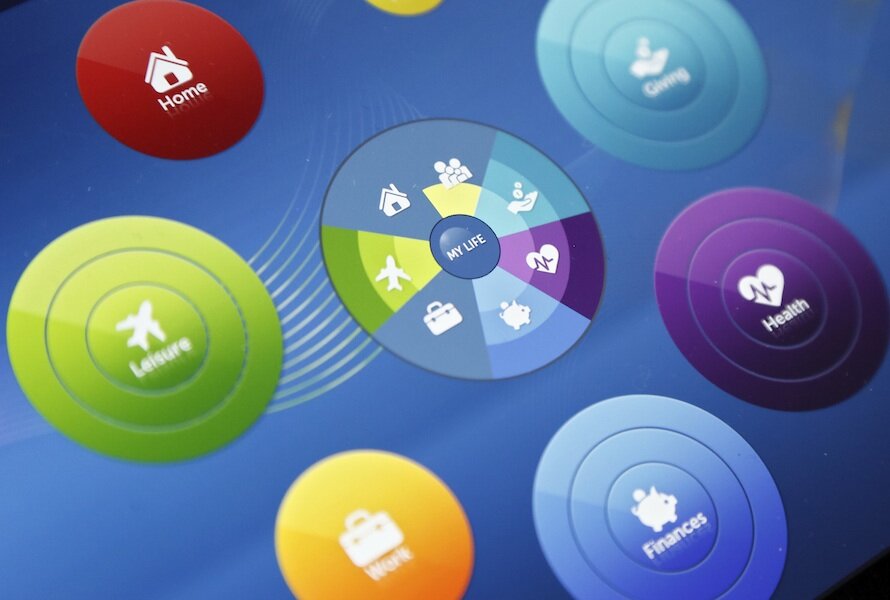Online banking: how mobile apps are helping the 'unbanked'
Loading...
If you’re among the unbanked in America and you own a smartphone, that little device could be your onramp to the financial mainstream. Mobile apps may encourage the use of traditional online banking services, according to a Federal Deposit Insurance Corp. survey.
Smartphones are changing how people approach banking, most significantly among the underbanked, which includes those households that have an account at a financial institution but use alternative service providers such as check-cashing stores or payday lenders, the FDIC said in reporting the survey results. The agency says that about 30% of underbanked households use mobile devices to get into their accounts, compared with almost 22% of fully banked households.
“Mobile technologies might also become useful tools for bringing unbanked households into the financial mainstream,” the agency said. “Innovations such as mobile account opening could play a role in expanding access to banking for the unbanked.”
Smartphone tools
Access to smartphones is a chief reason mobile banking rates have increased. Almost one in four households reported using mobile devices with their accounts. Most often, that meant monitoring a balance or reviewing recent transactions. About a quarter of households used mobile apps to deposit a check. More than half of underbanked households said they used mobile text alerts compared to less than 45% of fully banked households.
The primary way people still gain access to their accounts is through tellers or online portals – about two out of three households listed one or the other as their usual way. Even though mobile apps are becoming more popular, these methods are still, by and large, most commonly used by the underbanked, the survey shows.
Mobile and online banking methods tend to supplement banking, rather than substituting for it entirely, according to the survey, which is done every other year. Those who primarily used online or mobile apps to access their accounts said they typically used additional methods as well, such as cash machines and branch visits.
Employment effects
The number of unbanked households dropped last year to 7.7%, representing more than 25 million Americans, from 8.2% in 2011 according to the survey, which measures the underserved population. The FDIC cited improving economic conditions and changing household demographics as the main contributing factors to this decrease. An unbanked household doesn’t hold an account at an insured financial institution, the agency said.
About one in five households, with more than 67 million people, were underbanked last year, according to the FDIC. The category is for those that have an insured account but that used an alternative service at least once in the past year. The proportion of underbanked households was unchanged from 2011.
Income and employment were the top factors in determining whether households held bank accounts. Slightly less than half of the unbanked previously had an account, but closed it following a job loss or a significant drop in income. About 10% reported becoming unbanked in the previous 12 months.
About 35% of unbanked households cited not enough money as the main reason they didn’t have an account. Dislike or distrust of banks as well as high or unpredictable account fees also were given as reasons for being unbanked.
Unbanked Americans increasingly use prepaid debit cards as a payment method and as an alternative to holding a bank account, the report shows. Prepaid card use grew to 27% of unbanked households last year from 12% in 2009.
Just as losing a job can lead to becoming unbanked, landing a new job and particularly the need for direct deposit of a payroll check often spurred unbanked households to open bank accounts, the agency said. Of the 1.6% of households that became banked in the previous 12 months, almost a quarter reported that a new job figured in the decision. More than a third – nearly 35% – said setting up a way to receive direct deposits was the main reason they opened a bank account.
Households with the highest unbanked rates included non-Asian minorities, people with lower incomes, and younger and unemployed residents, according to the survey. While the rates for most were fairly unchanged from 2011, the rate for Latino households dropped to about 18% last year from 20% in 2011. Higher levels of employment, income and education accounted for much of the decline.
Future possibilities
It’s more likely that currently unbanked households will open an account in the future if they’ve recently had a bank account – about 75% say they probably will as opposed to 25% among those who’ve never held an account and 43% that last had one more than a year ago.
There’s no doubt about it, mobile apps are helping to entice even the most wary among us back to banks. These apps showcase some of the most convenient and popular services, such as checking and savings account monitoring, making payments to your pals, finding a cash machine, depositing a check and paying bills. So if you’re part of the underbanked or unbanked population and own a smartphone, you may want to use it to change the way you manage your money – if you haven’t already.







